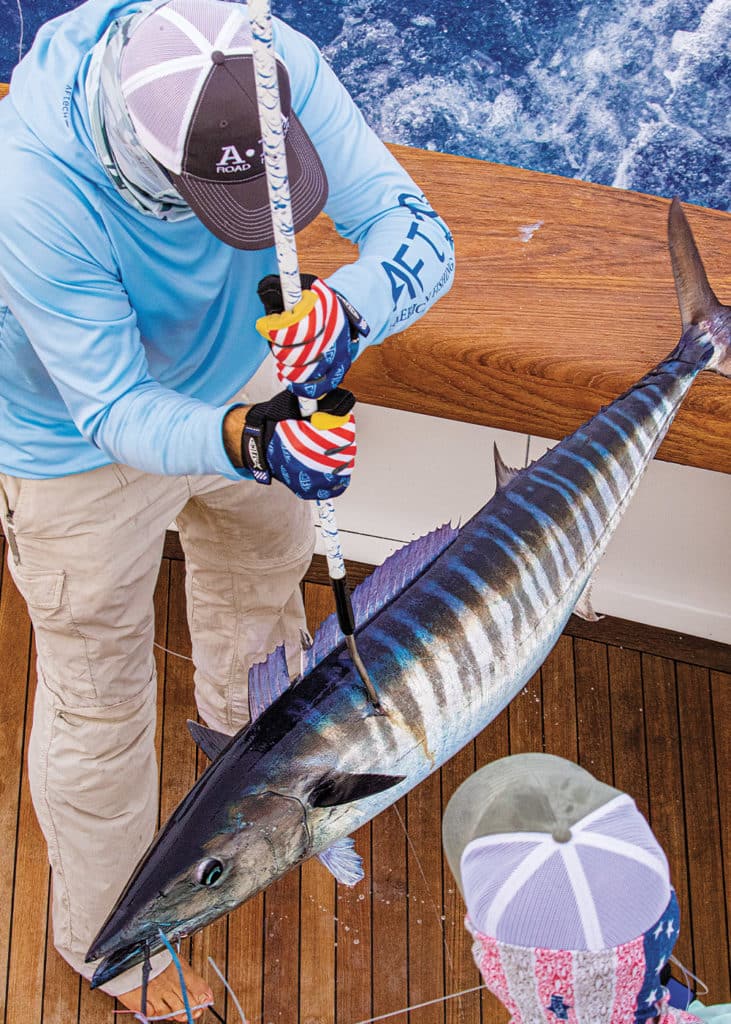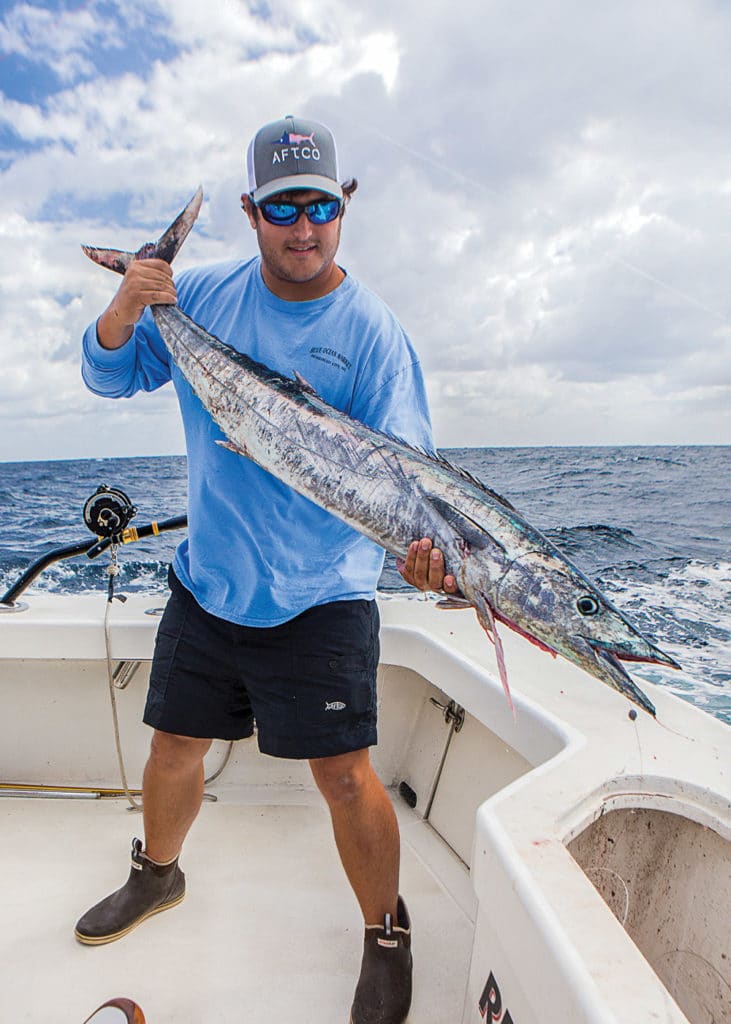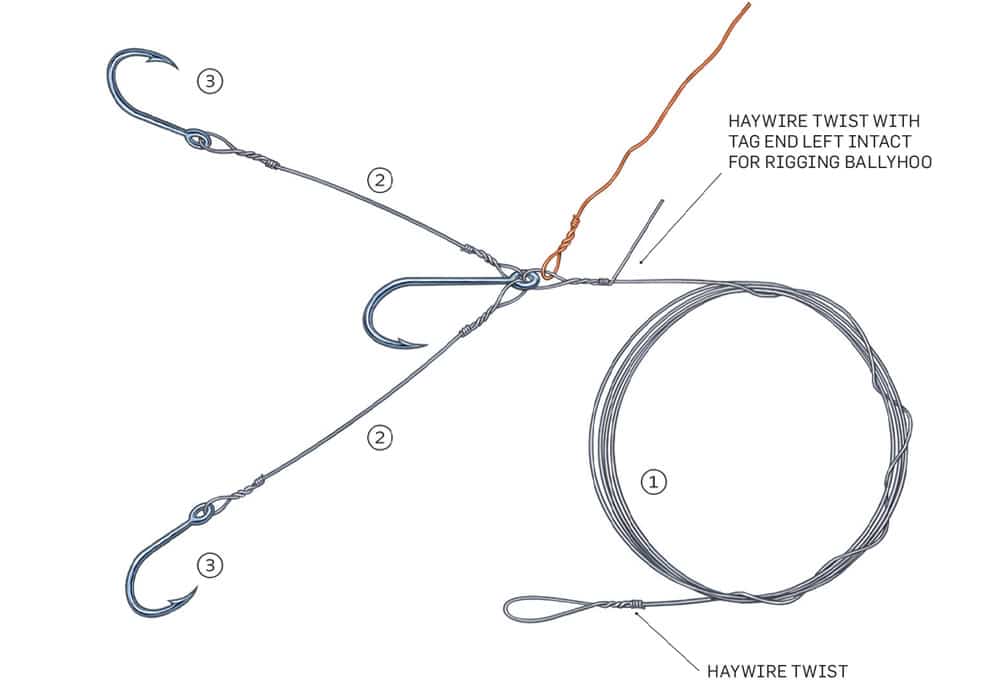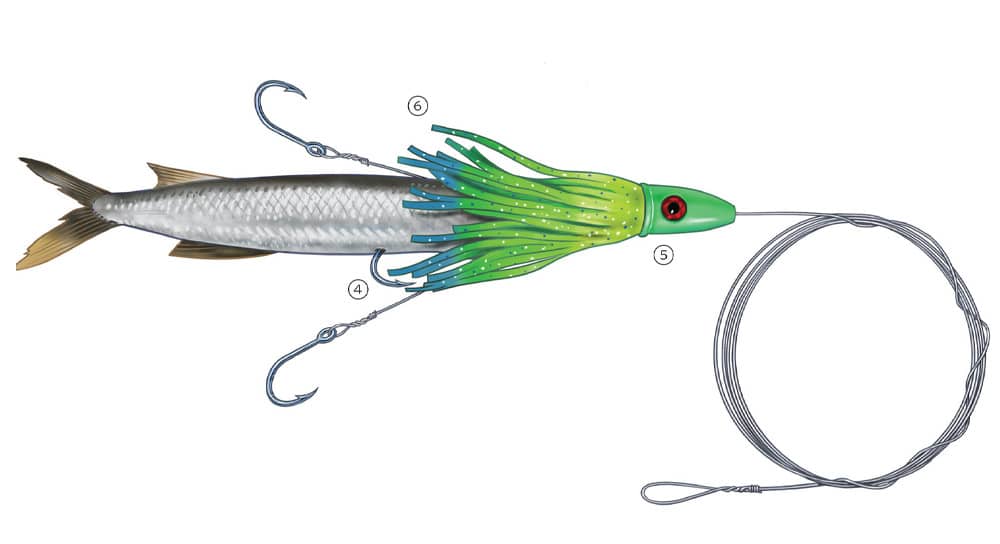
Targeting wahoo is a specialized art, ranging from live-baiting to high-speed trolling. A slashing fish with a hard mouth, wahoo are difficult to hook. If they’re still on after the strike, it’s a must to keep a tight line, right to the gaff; any slack and their violent head shakes will likely toss hooks. Even then, they sometimes, somehow, disconnect.

The Pride of Marathon
Enter Capt. Jimmy Gagliardini, an in-demand Florida Keys guide specializing in reef, wreck and offshore fishing. With an extensive background in big-game fishing, and now a 17-year veteran charter captain behind the Blue Green Resort in Marathon, Gagliardini has perfected a rig that literally grabs a wahoo, regardless if they miss the hooks on the strike or shake them during the fight. He claims his hookup-to-fish-box ratio with this rig is outstanding. So much so that if one actually escapes the Gagliardini Grabber, credit usually goes to divine intervention. The rig is small- to midsize-boat-friendly and geared for traditional trolling speeds. Just send a couple out on flat lines and go catch your wahoo dinner.

The Hardware
Components include a weighted, streamlined, cone-shaped lure, No. 9 single-strand wire, soft copper wrap, a 7/0 O’Shaughnessy hook, two 6/0 short-shank J hooks, and a fresh ballyhoo. The advantage lies with the two separate stinger strands that swing freely along the body of the bait.
“A lot of wahoo throw hooks with their radical head shakes,” Gagliardini says. “With this setup, the stinger hooks grab hold during these head shakes. This is a great thing, because should the main hook pull, at least one stinger hook should be deeply embedded in the fish. Just use extra caution when handling a caught fish; you’ll have both the sharp teeth and three hooks to keep an eye on.”

Wahoo Made Easy
Wahoo are caught year-round, but they migrate off South Florida, the Keys and the Bahamas during the winter, with Thanksgiving as
the usual kickoff.
During the spring and summer season, look for them around structure, such as wrecks, ledges, humps, rubble and sharply descending bottom, as well as surface transitional zones between 90 and 250 feet of water.
During July and August, South Florida sees some of its largest wahoo, often caught around schools of bonito.
At times, ’hoos hold under floating debris, much like dolphin, or sometimes hang beneath a school of small dolphin well offshore.
In open water, stay alert for rips and color changes, which often aggregate bait and attending wahoo.
There are numerous tactics to score wahoo, but among the simplest and most effective is trolling natural-bait-and-lure combos such as the Gagliardini Grabber, and medium to large ballyhoo with an Ilander or similar lure.
Read Next: Big Wahoo in the Mid-Atlantic
Artificials also work well on their own. The best choices include weighted, cone-shaped trolling lures and deep-diving plugs trolled between 8 and 10 knots.
Two crucial things to remember on the strike: First, maintain trolling speed and heading for 30 seconds or so to help set the hooks and keep the other baits in play to entice other wahoo; second, set a plotter waypoint at the location of the strike so you can return to that spot. Wahoo are schooling fish, so where there’s one, there’s often more of them.
Lastly, when trolling, send at least one bait down on a planer, such as Sea Striker’s HS-8. Wahoo often hold 100 feet or so beneath their targeted forage.









